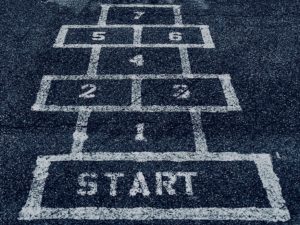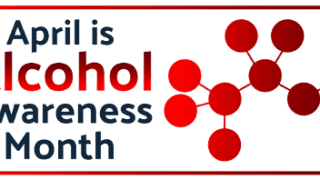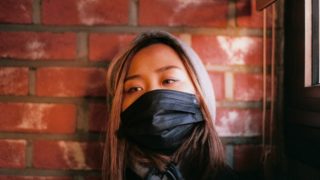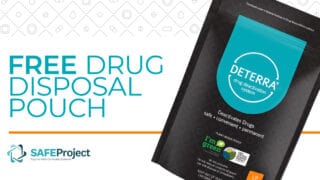
Our SAFE Project team is often asked, “What can I do to help?”
We are focused on stopping the addiction epidemic together — and there are simple things we all can do that can make a difference for your family, your community, or your campus.
1. First, understand what’s at stake.
- Read about how the crisis got started, and its effect on communities across the country. Here are just a few widely recommended reads:
- “The Family That Built an Empire of Pain”, The New Yorker, by Patrick Radden Keefe. This is a seminal piece of reporting on the family that founded Purdue and developed OxyContin, and pioneered its marketing to doctors across the country.
- “Dreamland: The True Tale of America’s Opioid Epidemic” by Sam Quinones. The book documents how the deadly crisis started, from prescription drugs to heroin and fentanyl.
- “Dopesick: Dealers, Doctors, and the Drug Company that Addicted America” by Beth Macy. It’s an unflinching look at how local communities were affected and explores the different facets of the epidemic.
- Watch documentaries like NOVA’S “ADDICTION”, a one-hour PBS documentary that looks at the science behind the epidemic. It features the stories of several families, including the Winnefelds.
- Listen to podcasts, they help us feel the stories being told and give us access to a deeper level of connection, understanding, and empathy with the storytellers and topics.
2. Start at Home:
- ”When should we start talking to our kids about opioids?” It’s never too early. If your children are in elementary school or younger, begin by talking openly with your children about a variety of subjects and stay actively engaged in their lives. If they are in middle school and high school – it’s not too late.
- When They’re Young: SAFE Project’s Lessons Learned gives you suggestions about how to talk to your kids about opioids and substance use disorder.
- How to Talk and Listen to Your Teen: A strong foundation means when the time comes to discuss harder issues — like drug usage or alcohol — we’ve already got a healthy start.
- Store your prescription medications in their original bottles in a locked cabinet, a hidden location, or a lockbox. Traveling? Store it in your locked suitcase. By the way, that also works at home or in a dormitory.
- Encourage and Practice safe prescription drug disposal. What’s in the back of your medicine cabinet? You do not need to save prescribed opioids from a previous surgery or accident. Don’t treat today’s back pain with a prescription your doctor gave you after last year’s root canal. Learn how you can safely dispose of them here.
- Learn what safe drug disposal looks like, who should be involved in the development of a program, and ways to promote it to community members in this downloadable PDF guide.
- Don’t share your prescribed medications OR borrow from others.
3. End the Stigma
- Stigma often acts as a barrier to individuals getting help for mental health and substance use disorders. SAFE Project believes there’s #NoShame in getting help or in talking about mental health and substance addiction. Join us in creating a nationwide movement by signing our pledge to combat negative public perception and support others in speaking up about their own disorders. Take the #NoShame Pledge.
- Substance use disorder is a chronic disease, not a moral failing. The American Society of Addiction Medicine defines and classifies addiction as a chronic disorder, a disease affecting important parts of the brain.
- Do you know a family or friend who has a loved one struggling with this disease? Offer compassion and support, not judgment.
- Accept that recovery IS part of the process. Treatment is just the beginning. It takes courage to be in recovery. To understand more about recovery, read this downloadable pamphlet by the Substance Abuse and Mental Health Services Administration.
- Choose your words carefully. Get to know “Addictionary”, a resource from the Recovery Resource Institute – a leading nonprofit research institute of Massachusetts General Hospital, an affiliate of Harvard Medical School. “Addictionary” can help you choose words that don’t stigmatize those with substance use disorder.
- Reducing stigma around substance use disorder, asking for help, or medication-assisted treatment, makes it easier for someone to say they need help seeking treatment.
- Have you done something to reduce stigma on your campus or community? Share your own story with SAFE Project
4. Talk to Your Prescribers:
- A visit to your doctor or dentist should be a conversation. Understand new medications, especially if they are an opioid. Don’t know what to ask? Visit this link for a list of recommended questions to ask. The FDA also has a printable list to bring with you.
- Accompanying an elderly relative? Talk to THEIR prescribers. Older adults often suffer from chronic pain, and are also at risk for substance abuse disorders – even if it’s unintentional.
- Accompanying your child or teen? Understand what they are prescribed, especially the side effects. Your kids will need your guidance and to understand the benefits of taking medications as prescribed, as well as not sharing with others. Just because your doctor prescribed the drug doesn’t mean it isn’t dangerous – especially for someone else.
5. Become a Community Partner or Volunteer:
- Many communities have their own working groups or task force to bring the community together. Consider offering your help – whether you have personal experience or not, communities need help to get their programs off the ground.
- There’s a lot you can do to support your community through local grassroots efforts. Consider becoming a SAFE Project volunteer in your state or community.
6. Get Trained:
- You can save lives when you are trained on how to use naloxone or Narcan. Many communities now offer free training. Check with your local Department of Health to see if they offer in-person training.
- You can also enter “Narcan training” or “Naloxone training” into any web search bar, and then add your zip code or your county. You will be able to find in-person training near you.
- Join the Naloxone Awareness Project and get the resources you need to build awareness about the life-saving drug, naloxone.
- Join the Naloxone Saves Challenge to help SAFE Project spread the word about the life-saving benefits of naloxone – an opioid overdose antidote.




